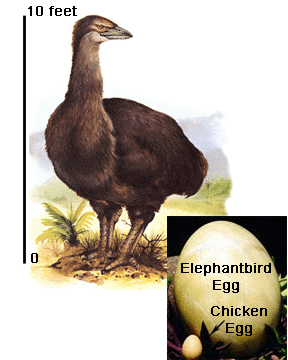
Winged Chupacabras sketch from "The Cryptozoologist"
Some of the Chupacabras reports have been insisting all along that they were describing giant vampire bats, some of the mid-1970s "Vampire" reports from Puerto Rico that were the foreunners of the 1990s reports were supposed to have been bats. Recently, news has come out of both Nicaragua and northern Chile of "Mutant giant Vampire bats" The largest of these Chupa-bat creatures are the size of a child or small human being (dwarf or midget) and they stand upright, on their hind legs. They have typical bat wings, which must be in the process of unfurling in this illustration. Also in comparison to the other illustration above, the area taken to be "eyes" before seem to be markings on the forehead here, and the actual eyes much smaller. This type would not actually be a vampire but would be blamed for the acts of wild dogs.The medium-sized giant bat walks on all fours and looks like the much smaller vampire bat, and there are reports which state it is quite at home and agile on the ground. It is the size of a small dog with the wings folded up and many people also say it is an actual vampire like the similar but smaller true vampire bat, however, it seems to be an opportunistic hunter and scavenger instead, although apparantly they can be seen to mob small prey animals such as sheep or goats. It seems they are instead giant (outsized) FALSE Vampire bats.
BOTH types of giant bats are reported over much the same area in both of the Americas and roughly the area between the Tropic of Cancer and the Tropic of Capricorn. The larger bat is the same as the American Ahool or Kamazotz, and it is evidently actually a fishing bat like its Old World counterpart.
 |
| Genyornis, Pleistocene dromornithid. |
It is thought by some that not only is there good evidence for the survival of the Genyornis as Muhurungs or Thunder Birds of Aboriginal legend, some of the more troublesome evidence might enen indicate an even larger species. The Genyornis is thought to have stood in the vicinity of 7-9 feet tall, but some of the reports and tracks are of "Moa" sizes and indicating birds 10-15 feet tall, possibly more inclined to be predatory as well: giant Diatrymas. Part of this evidence has been used to support the notion of Burrunjor as being Tyrannosaurs, in particular some truly enormous 3-toed footprints. However, it is not known how old things like the eggs and footprints are for certain. The stories of biped predators carrying off calves might refer to such birds, for example. As was mentioned before, some of their eggs are still being found: they are reported as large as Aepyornis eggs and sometimes allegedly quite fresh. (Ivan T. Sanderson in Investigating the Unexplained.)
Here is the standard, alternative explanation for such eggs:
http://beachcombersalert.org/ElephantBirdEggs.html
Across the 500-mile-wide Mozambique Channel, Madagascar stretches 1,000 miles along Africa’s southeast coast facing the Indian Ocean. Earth’s fourth largest island, Madagascar after Greenland, New Guinea and Borneo, once was home to the Giant Elephantbird, the largest ever to tread Earth.
 |
| Elephantbird (Illustration adapted from“Vanished Species” by David Day, Gallery Books, 1989 revision.) |
Aepyornis maximus(Greek for greatest tall bird) males stood 10 feet tall, weighed up to one ton — two to four times the weight of a present-day ostrich — and laid watermelon-sized eggs, larger than any of known dinosaurs.
As Madagascans say, the Elephantine birds laid Atodim bobombe. One of 43 known complete bobombes, John’s holds six liters and measures a foot long by eight inches wide. A larger one measuring three feet around, contained 9-plus liters (2.4 gallons). Another, more than foot long, originally weighed 20-plus pounds, equal to eight ostrich eggs. The average ostrich egg weighs 3.63 to 3.88 pounds, measures 6 to 8 inches long and 4 to 6 inches wide, and can support the weight of a 252- pound person, according to the 1977 Guinness Book of World Records Elephantbirds buried their eggs in beach, dune and river sands. “ There is a fairly extensive literature on eggs floating out of nests in marshes or on beaches when high water comes up,” writes bird authority John Dennis. In southern Madagascar, torrential rains washed out a whole egg and laid it to rest intact beneath a bush on a grassy plain (see National Geographic, October 1967).
[National Geographic is the source article for this theory-DD]
As John Dennis alludes, river floods and ocean tides may have floated bobombes out to sea. Rains fall heavily in Madagascar December to April, the likely time eggs began drifting. Though fossilized calcium carbonate shells appear heavy, hollow foot-long eggs like John’s — sherds crack with the sound of porcelain — would float high in sea water like empty pottery jars.
Other possibilities exist for flotation. In the time humans hunted Aepyornis to extinction, tribes probably discovered uses for the great eggs.

... Along the southwestern Australian coast within a hundred miles of Perth, John Hawkins confirms that two elephantine bird eggs were discovered, one presently in the Perth Museum...
[Other eggs of Elephant bird dimensions are found on the Canary Islands: since there is no way to account for them by way of oceanic currents, it is hypothesisized that the islands once had their own population of independantly-evolved Elephant birds. And indeed the same theory also works in this case-DD]




No comments:
Post a Comment
This blog does NOT allow anonymous comments. All comments are moderated to filter out abusive and vulgar language and any posts indulging in abusive and insulting language shall be deleted without any further discussion.